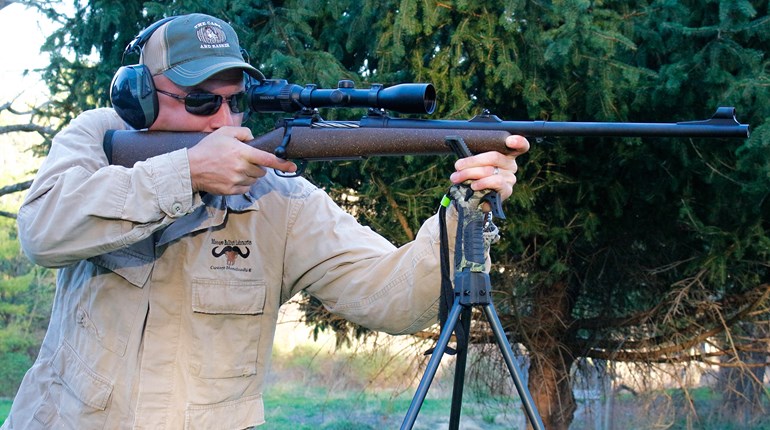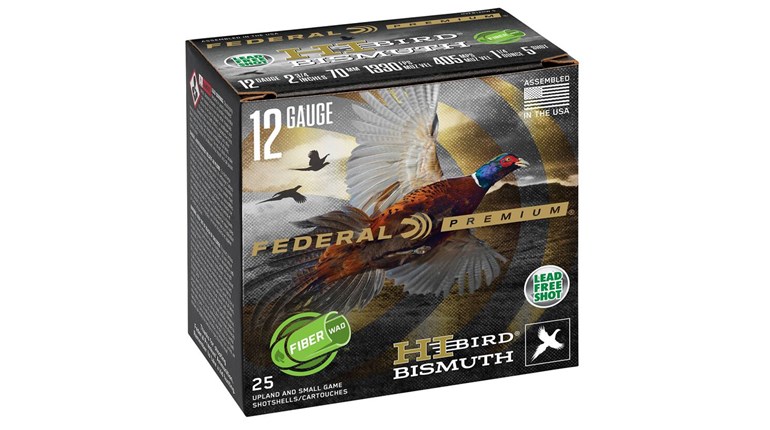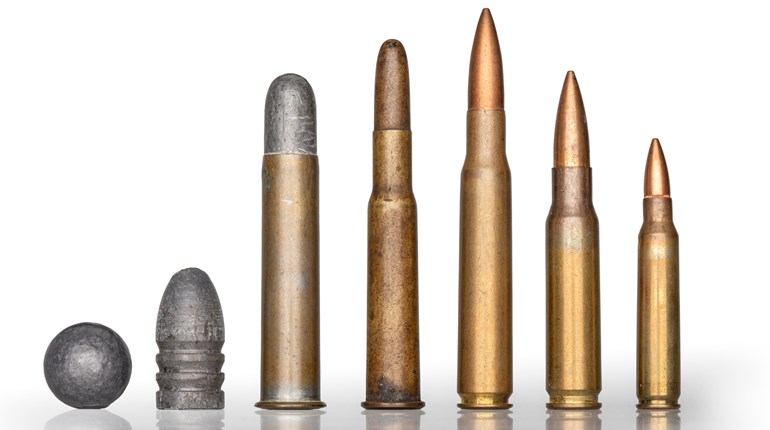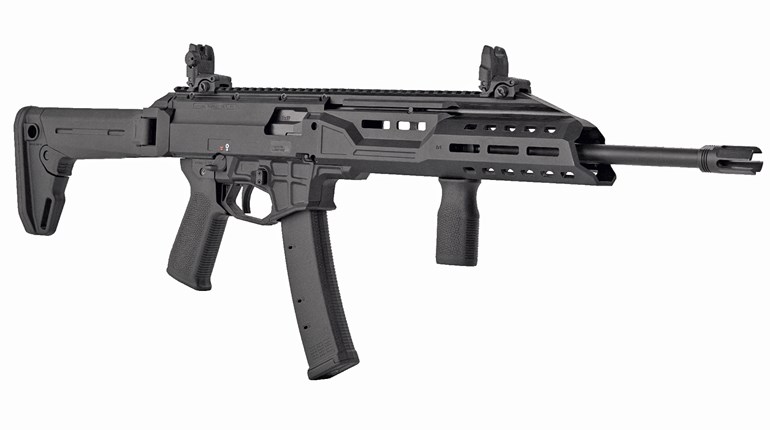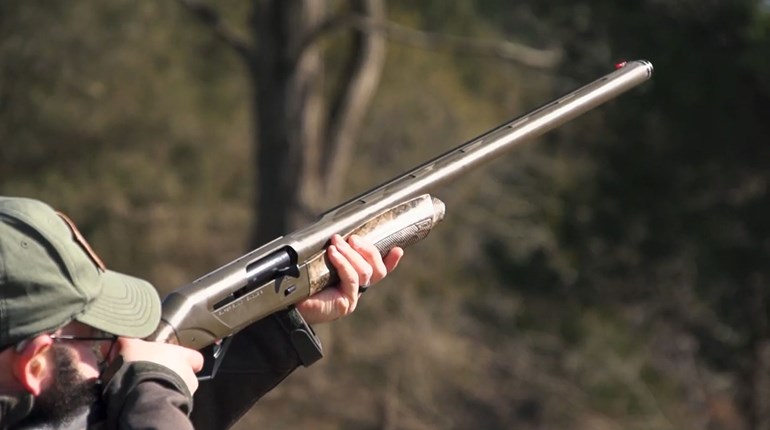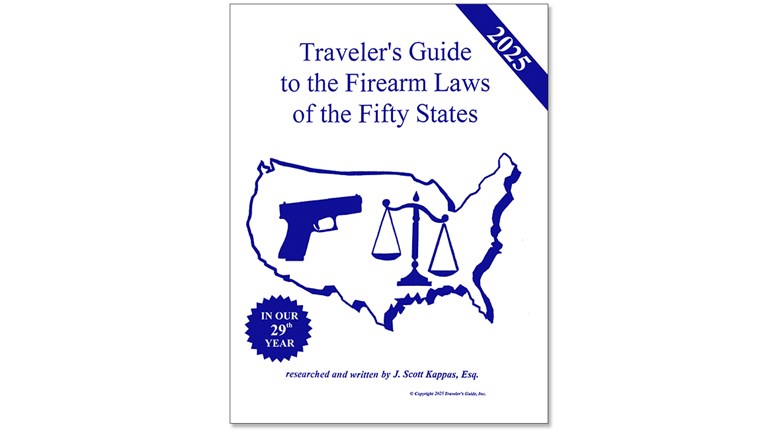
In the midst of the World War II, Roy Weatherby unveiled his .270 Weatherby Magnum, the first of many cartridges to bear his name. They were truly revolutionary, being among the fastest ever developed at the time, and were based on the belted .375 Holland & Holland case, shortened in some instances, with a double radius shoulder.

Roy and his company would develop additional cartridges in .257ʺ, 6.5mm, 7mm, .300ʺ, and .338ʺ based on the H&H belted case, and later—based on a larger proprietary belted case—in .375ʺ, .416ʺ and .458ʺ diameter. And while Roy would become famous for fast big-game cartridges, he took his plans to the lower end of the spectrum, with a couple of cartridges—unique in design—in .224ʺ diameter and 6mm.
That 6mm design, known better as the .240 Weatherby, is a neat little cartridge, sort of a ‘mini-magnum,’ if you will, released in 1968. Yes, it’s got a belt—though it truly serves no purpose other than to visually match the rest of the series—but it isn’t based on the Holland & Holland design. And while Holland & Holland had their own 6mm magnum—1953’s .244 H&H Magnum—that required a magnum-length receiver. The .240 Weatherby Magnum shares the same case length as the .30-06 Springfield at 2.500ʺ (okay, it’s .004ʺ longer) and shares the same case head diameter at .473ʺ, so the case can and does fit and perform well in a standard long-action receiver.

In spite of the scaled down dimensions of the .240 Weatherby, it lives up to the family reputation of serious velocity. The .240 Weatherby Magnum is—well, perhaps was—the fastest 6mm on the commercial market; one or two of the .243 WSSM loads may equal or slightly exceed the .240 Weatherby’s velocity. But before the release of the WSSM, the .240 Weatherby was the speediest of the lot, exceeding the muzzle velocity of the .243 Winchester and 6mm Remington by 300 fps. The problem with the .240 Weatherby Magnum that is it’s rather rare.
The vast majority of rifles are from Weatherby—though you will find some custom guns based on FN Mausers and other actions if you peruse the usual gun auction sites—as is the ammunition. Weatherby’s ammo has long been good stuff, but in this instance, Weatherby is the only producer among the major factories; HSM lists a couple of different loads (using Berger and Hornady bullets) but the trio of Weatherby loads make up the majority of available ammunition. At the time of this writing, Weatherby offers an 80-grain Barnes TTSX all-copper bullet at 3500 fps, a 100-grain spitzer softpoint at 3200 fps and a 100-grain Nosler Partition at 3406 fps. With those three (and the pair from HSM), you can do just about anything you’d probably use a 6mm for, at least in the hunting world.

The Weatherby hook is, was, and more-than-likely will continue to be a flat trajectory in the hunting field. The very speed of the Weatherby cartridges preclude them from being serious target cartridges—at least in today’s sense of a target cartridge—as the throat wear from a long session will show up early on. But as a hunting cartridge, where shots are few, or are at least strung out, the .240 Weatherby can be a sound choice. Looking at the data on Weatherby’s website, all three loads can be zeroed at 300 yards, with a midpoint rise of 4.4 inches (at 200 yards, with the slowest 100-grain load) and dropping 11 inches at 400 yards (though the faster two drop only 8 inches at that distance).
What is it good for? Where does the .240 Weatherby fit in? Well, the sheer speed and case capacity (right around 64 grains of water) sort of take it out of the prairie dog rifle class, as I’d be willing to bet you’d not only ruin a barrel pretty quickly when sitting on a hot town, but the recoil level of the .240 would become unpleasant after a hundred rounds or so. And as the bullet weight tops out at 100 grains, it probably shouldn’t be the go-to choice for elk or moose. However, for deer (both mule deer and whitetails alike), pronghorn antelope and similar-sized game, especially in open country, the little .240 will shine.

While I like the Barnes TTSX and Partition for the .240 Weatherby, handloading premium bullets will make the cartridge even more flexible. The 90-grain Swift Scirocco II, or Nosler AccuBond would give a bit more bullet weight than the Barnes TTSX load, and a better ballistic coefficient than the 100-grain Partition does, and both designs would hold together well at shorter distances. Should you prefer to handload for the .240 Weatherby—and I see no reason why you shouldn’t—look to a powder having a burn rate around IMR 4350 or a bit slower, even as slow as IMR 7828.
Does the .240 Weatherby Magnum make a sensible choice for the shooter on a budget? Probably not, especially looking at the availability of the .243 Winchester rifles and ammunition. But if you’re one of those hunters who likes an obscure cartridge, one that not many others are carrying afield, the .240 Weatherby Magnum may just tickle your fancy. It is unique, and it certainly gets the job done.
Looking for previous installments of our "Behind the Bullet" series? We've got you covered.
• .458 Lott
• .264 Winchester Magnum
• .348 Winchester
• .33 Nosler
• .260 Remington
• .30-30 Winchester
• .416 Rigby
• .358 Norma Magnum
• .22 LR
• 7mm-08 Remington
• 8mm Remington Magnum
• .338 Federal
• .224 Valkyrie
• .338-06 A-Square
• 9.3x62mm Mauser
• .257 Weatherby Magnum
• .45-70 Government
• .300 H&H Magnum
• .25-06 Remington
• .30-06 Springfield
• 6.5 Creedmoor
• .300 Remington Ultra Magnum
• 7mm Remington Magnum
• .470 Nitro Express
• .280 Remington
• .300 Winchester Magnum
• .270 Winchester
• .222 Remington
• .45 ACP
• .404 Jeffery
• .44 Remington Magnum
• .41 Remington Magnum
• .243 Winchester
• .338 Winchester Magnum
• .357 S&W Magnum
• 6.5-284 Norma
• 8x57 Mauser
• .38 Smith & Wesson Special
• 7x57mm Mauser
• 9 mm Luger
• .35 Whelen
• .454 Casull
• .375 H&H Magnum
• .45 Colt
• .22-250 Remington
• 10mm Auto
• .308 Winchester












